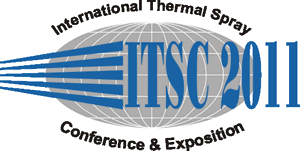
|
| Abstract No.: |
|
Scheduled at:
|
Thursday, September 29, 2011, Saal C2.1 3:15 PM
Corrosion Protection 2
|
|
| Title: |
Oxidation behavior of CoNiCrAlY bond coats produced by APS, HVOF and CGDS at temperatures of 1000°C and 1100°C
|
|
| Authors: |
Jean-Michel Roy* / University of Ottawa, Canada
Patrick Richer/ University of Ottawa, Canada
Bertrand Jodoin/ University of Ottawa, Canada
|
|
| Abstract: |
This study compares the oxidation behaviour of CoNiCrAlY coatings manufactured by the HVOF, APS and CGDS deposition techniques when submitted to temperatures of 1000ÚC and 1100ÚC. The as-sprayed coating microstructural features were characterised using SEM and XRD analysis before being subjected to isothermal heat treatments in an air furnace. Oxide scale composition was determined using XRD, SEM and EDS analysis while the oxide growth rates were obtained using mass gain measurements. The as-sprayed HVOF and CGDS coatings exhibit similar microstructures while the APS samples have a significantly higher porosity and oxide content levels. Results from the oxidation experiments indicated that the oxide growth rate of HVOF and CGDS were lower than that of the APS samples. The results also indicated that samples oxidised at 1100ÚC have a lower oxide growth rate than those oxidised at 1000ÚC. Analysis of the oxidation process up to 100 hours indicates the formation of dense ±-Al2O3 is more favourable at 1100ÚC while a transition alumina, ¸-Al2O3 is more favourable at 1000ÚC. Furthermore, the surface profile of the samples oxidised at 1100ÚC were much more uniform and free of protrusions. From these results, it can be concluded that the formation of ±-Al2O3 is favourable at 1100ÚC and leads to lower oxide growth rates and a more uniform oxide layer.
|
|
